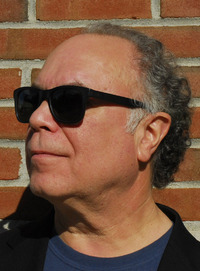THE EMERGENCE OF THE COMPETITION COBRA.
 Sunday, January 14, 2024 at 08:29AM
Sunday, January 14, 2024 at 08:29AM By Peter M. DeLorenzo
Detroit. The reputation of the storied Shelby Cobra - and the legend that was created around it - was forged on the race track. The emergence of Shelby American as a force to be reckoned with was due to the fact that Carroll Shelby was fortunate enough to have assembled some of the most brilliant minds in the high-performance arena at the time to design (Peter Brock), fabricate (Phil Remington), develop (Ken Miles) and race the Cobra (Miles, Gurney, Bondurant and the best American drivers of the era). The Shelby American team reveled in its irreverent and "outsider" status, and its rocket ride to the top of American sports car racing has been well-documented. I am going to focus on just two of the team's early successes this week: the first win at Riverside International Raceway on the weekend of February 2-3, 1963. And again at Riverside the following October.
The race in February was a much-watched event from the get-go, because Dave MacDonald - the famous driving star who had forged his reputation racing Corvettes - had switched his allegiance for the race weekend to appear in one of Carroll Shelby's Cobras. And Ken Miles would be his teammate, a formidable duo if there ever was one. This was huge news at the time, because though the Cobra had already established itself as the hot sports car of the moment on the street, it had yet to emerge on the race track. But that was about to change on that weekend in February 1963.
There was no question that MacDonald (No. 198 Shelby American Cobra) and Miles (No. 98 Shelby American Cobra) were the cars to beat. They were fastest in practice and seemed to be able to turn on the speed at will. And MacDonald and Miles flat dominated the racing that weekend, finishing 1-2 in both races, although an off-course excursion in the second race sent Miles into the pits on the first lap forcing him to rejoin the field in last position. Miles would charge all the way back to finish a close second to MacDonald. The race results that February weekend resonated all the way back to Warren, Michigan, and Zora Arkus-Duntov was given the bad news: Not only were the brand-new 1963 Corvette Sting Rays not competitive, they were humiliated by the Cobras. Duntov knew right then and there that the Corvettes were too heavy to be competitive, but that defeat would give him the genesis of an idea, and he began to think about an antidote for the Cobra venom. The result? He immediately started to develop a lightweight Corvette, and the Grand Sport program was born.
Later in the year, the full measure of the power of the Shelby American Cobra team was flaunted in a 1-Hour GT race for sports cars at Riverside. Shelby American came loaded for bear, entering three factory Cobras: The No. 97 Shelby American Cobra would be wheeled by Dan Gurney, the No. 98 Shelby American Cobra would be driven by Shelby stalwart Lew Spencer, and the No. 99 Shelby American Cobra would be driven by Bob Bondurant. In addition there was a lone, non-factory No. 96 Shelby Cobra entered for Allen Grant by Coventry Motors. And one of the crew members for that entry was none other than a very young George Lucas. Yes, that George Lucas.
The race was a full-on romp for Shelby American, with Bondurant finishing first, followed by Grant, Spencer and Gurney - no other competitor was even close. Shelby American would go on to greater glories with Peter Brock's Cobra Daytona Coupes, and, of course the Ford GT program, but those early days and the successes of the Shelby Cobras helped forge a legacy that survives - and thrives - to this day.
And that's the High Octane Truth for this week.
 (Photo by Dave Friedman)
(Photo by Dave Friedman)
Ken Miles (No. 98 Shelby American Cobra) and Dave MacDonald (No. 198 Shelby American Cobra) battle in Race 1, Riverside, February 2, 1963. (Photo by Dave Friedman)
(Photo by Dave Friedman)
Dave MacDonald (No. 198 Shelby American Cobra) runs in front of Ken Miles (!) in the No. 50 Otto Zipper Porsche 718 in one of the support races that February weekend at Riverside. (Photo by Dave Friedman)
(Photo by Dave Friedman)
Ken Miles (No. 98 Shelby American Cobra) leads Paul Rienhart (No. 6 Chevrolet Corvette Sting Ray) and Dave MacDonald (No. 198 Shelby American Cobra) in Race 1 at Riverside, February, 1963.

(Photo by Dave Friedman)
Dan Gurney (No. 97 Shelby American Cobra), Allen Grant (No. 96 Coventry Motors Shelby Cobra) and Bondurant (No. 99 Shelby American Cobra in a 1-hour GT race at Riverside International Raceway, October 13, 1963. Bondurant won, followed by Grant, Lew Spencer (No. 98 Shelby American Cobra) and Gurney. (Photo by Dave Friedman)
(Photo by Dave Friedman)
Bob Bondurant (No. 99 Shelby American Cobra) was the man to beat in the 1-Hour GT race at Riverside. (Photo by Dave Friedman)
(Photo by Dave Friedman)
Dan Gurney before the 1-Hour GT race at Riverside, October 1963. (Photo by Dave Friedman)
(Photo by Dave Friedman)
Gurney at speed in the No. 97 Shelby American Cobra at Riverside, October 1963.

(Dave Friedman photo)
Mid-Ohio, September 22, 1963. Ken Miles celebrates with Carroll Shelby after winning the United States Road Racing Championship race.
Editor's Note: Click on "Next 1 Entries" at the bottom of this page to see previous issues. - WG




